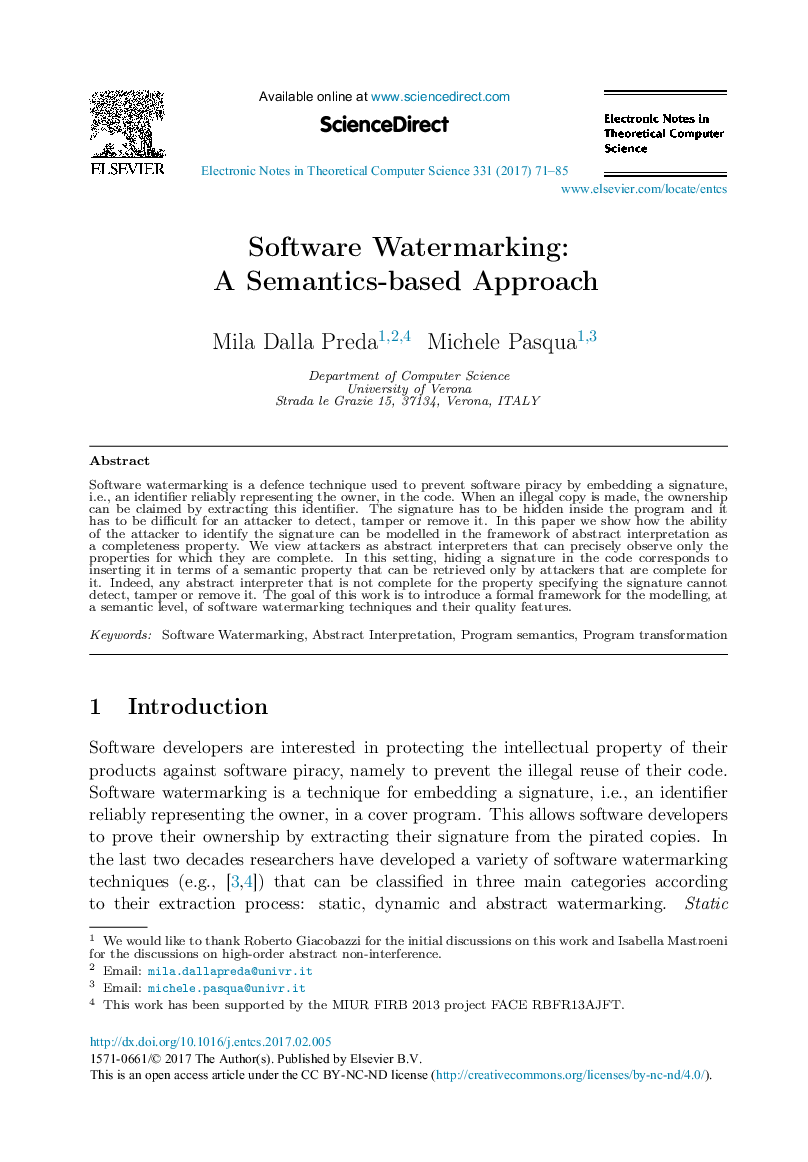| Article ID | Journal | Published Year | Pages | File Type |
|---|---|---|---|---|
| 4950027 | Electronic Notes in Theoretical Computer Science | 2017 | 15 Pages |
Software watermarking is a defence technique used to prevent software piracy by embedding a signature, i.e., an identifier reliably representing the owner, in the code. When an illegal copy is made, the ownership can be claimed by extracting this identifier. The signature has to be hidden inside the program and it has to be difficult for an attacker to detect, tamper or remove it. In this paper we show how the ability of the attacker to identify the signature can be modelled in the framework of abstract interpretation as a completeness property. We view attackers as abstract interpreters that can precisely observe only the properties for which they are complete. In this setting, hiding a signature in the code corresponds to inserting it in terms of a semantic property that can be retrieved only by attackers that are complete for it. Indeed, any abstract interpreter that is not complete for the property specifying the signature cannot detect, tamper or remove it. The goal of this work is to introduce a formal framework for the modelling, at a semantic level, of software watermarking techniques and their quality features.
